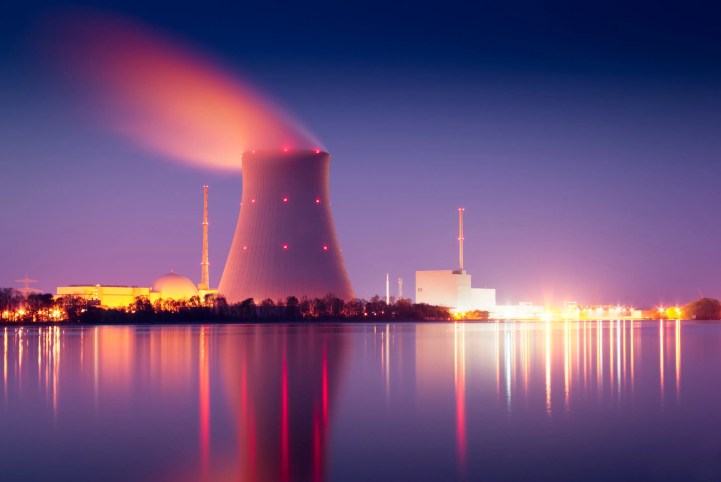Seismic activity is an unfortunate consequence of the natural processes that coincide with living on the surface of planet Earth, rendering the regions of the world proximal to fault lines prone to natural disasters. These events, in addition to conceiving tragedy in the lives of many individuals, can be reckless in their destruction. For nuclear facilities, special care must be utilized to assure a lower probability of structural damage brought on by earthquakes.
Nuclear facilities are defined as facilities that process, store, or handle radioactive materials in a form and quantity that poses potential nuclear hazard to the workers, the public, or the environment, including nuclear power plants. Due to the risks deriving from the many hazards present, nuclear facilities to be subject to stringent governmental regulations. Similarly, the Nuclear Regulatory Commission (NRC), requires all licensees of nuclear plants in the United States to adequately prepare for seismic activity in the design and maintenance of their power plants.
Four steps in the design and construction process lead to reliable nuclear safety-related structures under earthquake motions:
- Definition of the seismic environment
- Analysis to obtain response information
- Design or evaluation of the various structural elements
- Construction
ASCE/SEI 4-2016 – Seismic Analysis of Safety-Related Nuclear Structures is purposed with performing step 2, as it is used for conducting analysis on new or existing facilities. This standard provides methods for calculating seismic responses in safety-related structures and for deriving input motions for use in the seismic design and qualification of electrical and mechanical systems and components. These analytical methods are to provide reasonable levels of conservatism to account for uncertainties.
The ASCE/SEI 4-2016 standard can be used for the seismic analysis of all safety-related structures of nuclear facilities, including, but not limited to, above- and below-ground structures, buried piping, vertical liquid storage tanks, and distribution systems. The seismic analysis of these structures, as covered in the standards, must be conducted under the purview of the U.S. Department of Energy (DOE) or the U.S. Nuclear Regulatory Commission (USNRC). This will ensure verification of the analysis.
ASCE/SEI 4-2016 is an extensive revision of its predecessor, which was released back in 1998, and, as such, it contains vast improvements in structure and content. If you are interested in learning more about the changes to this edition, please refer to our companion post on the subject:
Changes to ASCE/SEI 4-2016 – Seismic Analysis of Safety-Related Nuclear Structures
Since it only addresses step 2 of the design and construction process for reliable nuclear safety-related structures under earthquake motions, ASCE/SEI 4-2016 is intended to be used in conjunction with ASCE/SEI 43-2019- Seismic Design Criteria for Structures, Systems, and Components in Nuclear Facilities, which provides criteria for seismic design of safety-related structures, systems, and components (SSCs) in the different types of nuclear facilities. The criteria established in this standard follows a graded approach, which is intended to control the design process so that the performance of the SSC related to safety and environmental protection is acceptable.
The criteria covered in ASCE/SEI 43-2019 focuses on the evaluation of structural capacity of the facilities and the evaluation of seismic demand, as well seismic design bases (SDBs) and other considerations that prepare nuclear facilities to the effects of an earthquake. Quality assurance measures and peer review are essential to the seismic design criteria addressed in the standard.
Standards published by the American Nuclear Society (ANS) can be beneficial in carrying out the guidelines established by these two documents. For example, ANSI/ANS-2.26-2004 (R2021) – Categorization of Nuclear Facility Structures, Systems, and Components for Seismic Design and associated standards ANSI/ANS-2.27-2020 – Criteria for Investigations of Nuclear Facility Sites for Seismic Hazard Assessments and ANSI/ANS-2.29-2020- Probabilistic Seismic Hazard Analysis provide criteria for selecting the seismic design category (SDC) and limit state that establish the seismic design basis (SDB) for SSC at the facility.
Furthermore, even though stringent governmental requirements paired with ASCE/SEI and ANS guidelines assure the safety of personnel and the environment in the event of an earthquake, there should still be a system in place to handle the aftermath of seismic activity. ANSI/ANS-2.23-2016 – Nuclear Power Plant Response to an Earthquake identifies actions to be carried out by the owner of a nuclear power plant after an earthquake, such as inspections to see if the plant’s structural integrity has been compromised.
